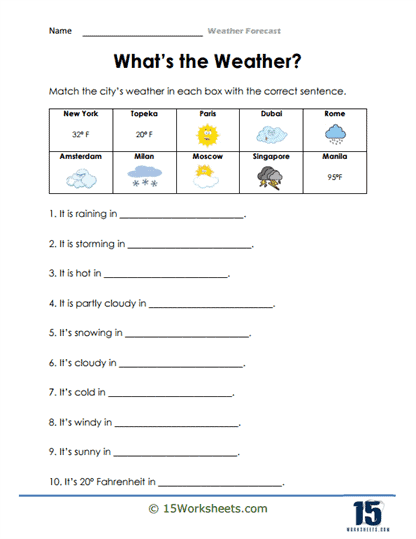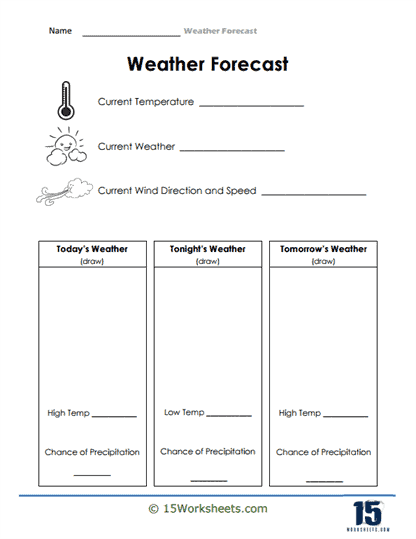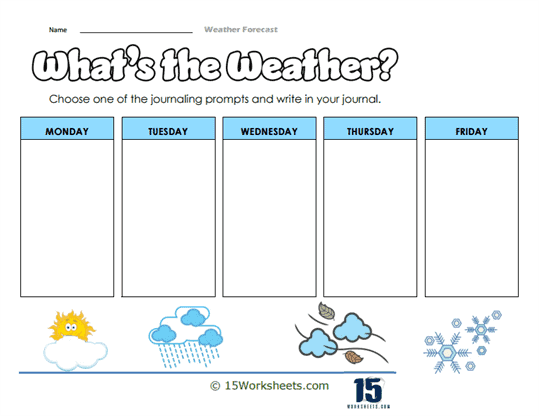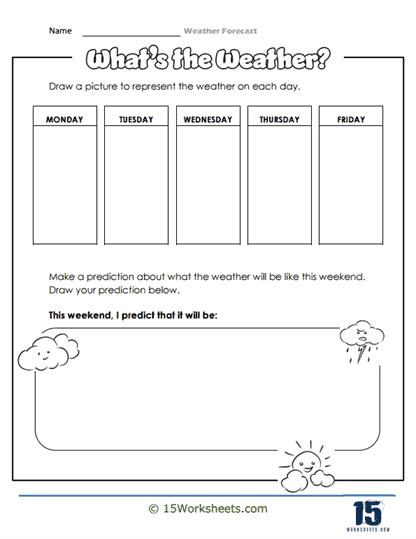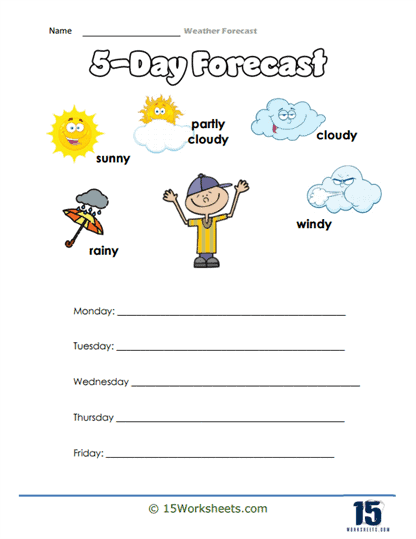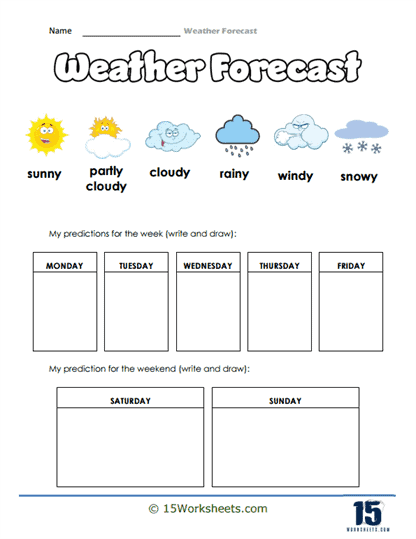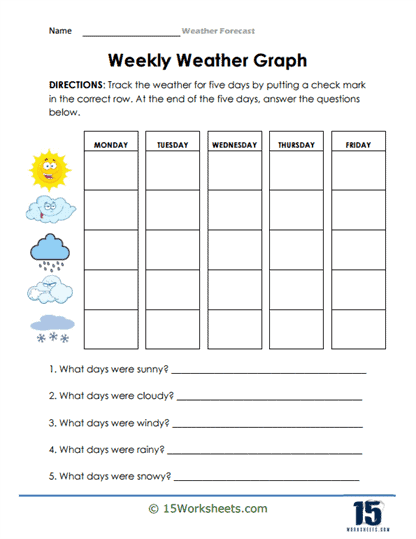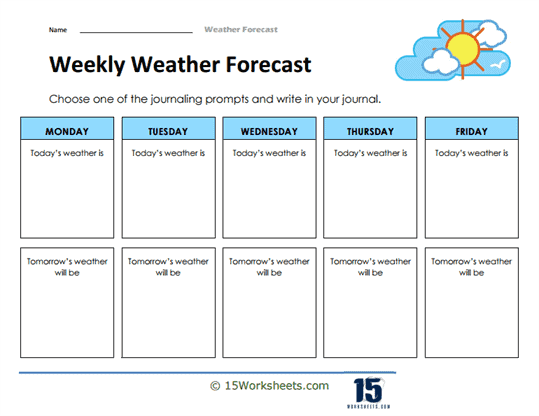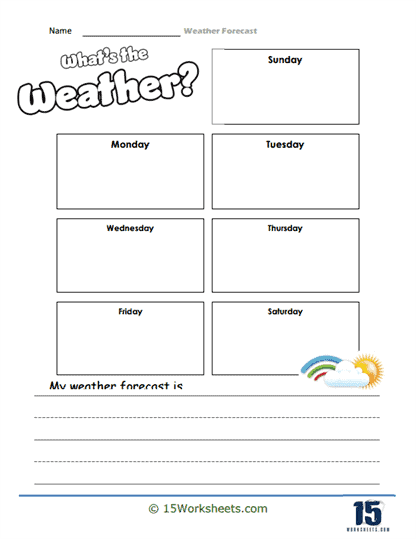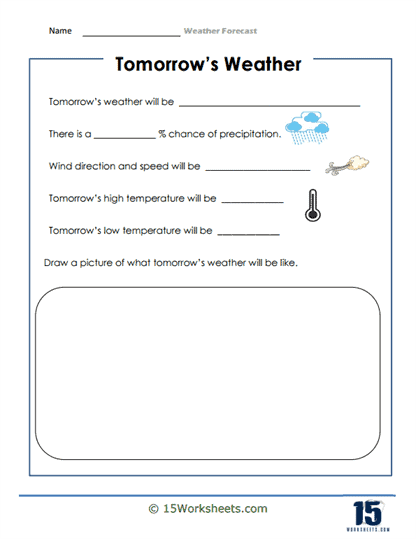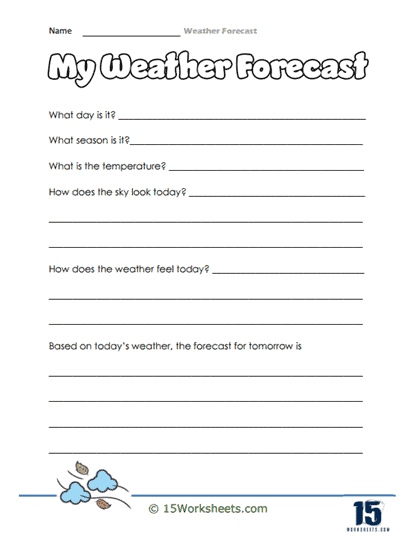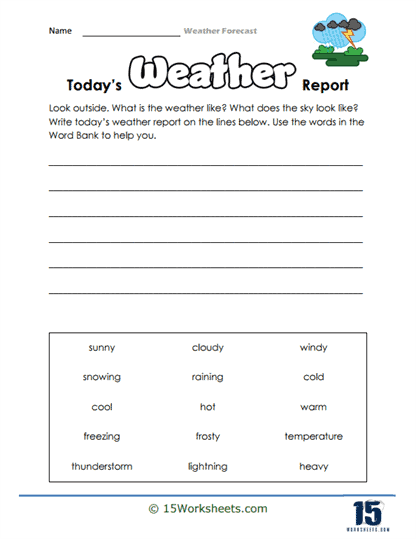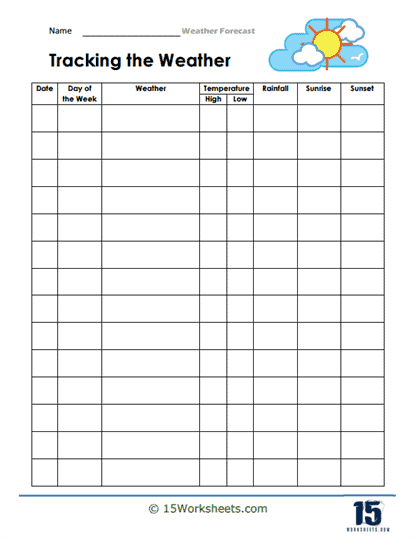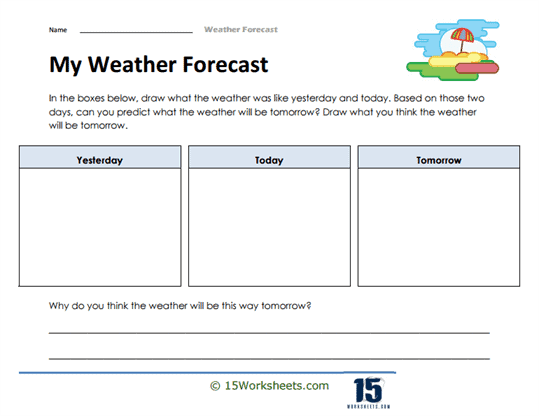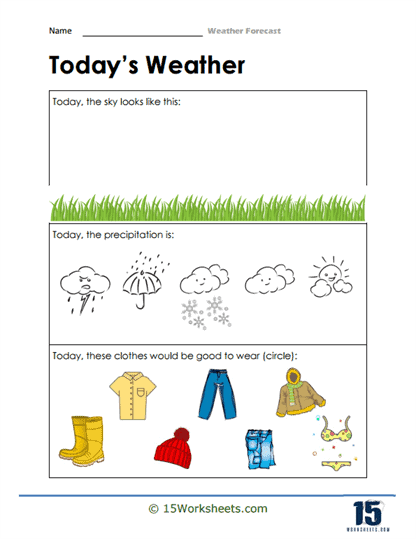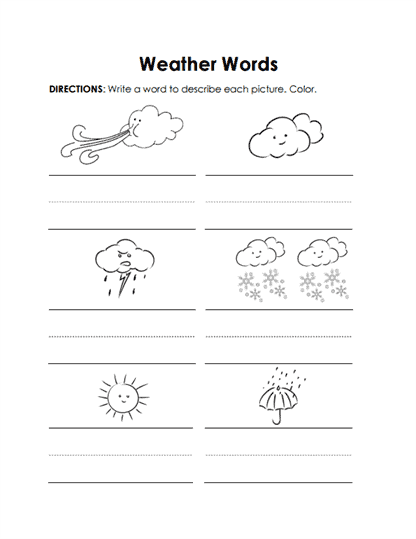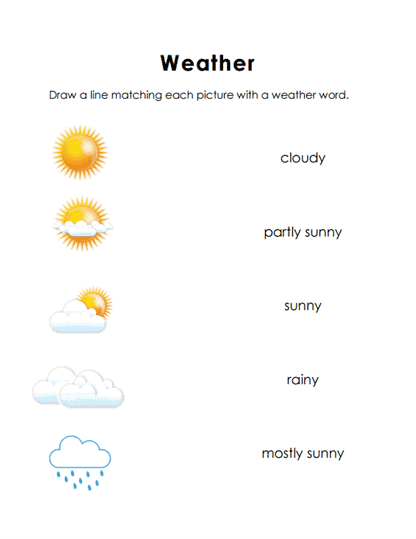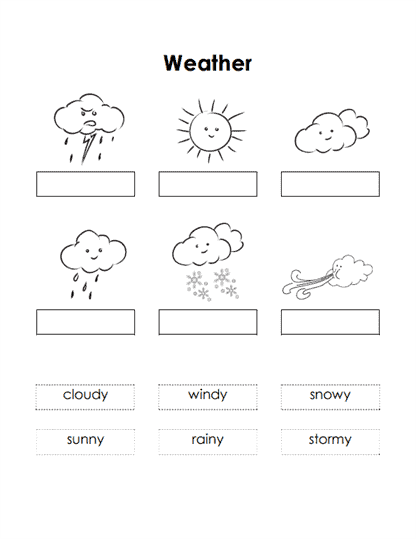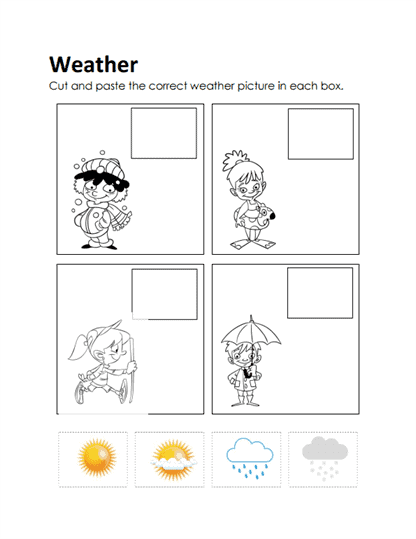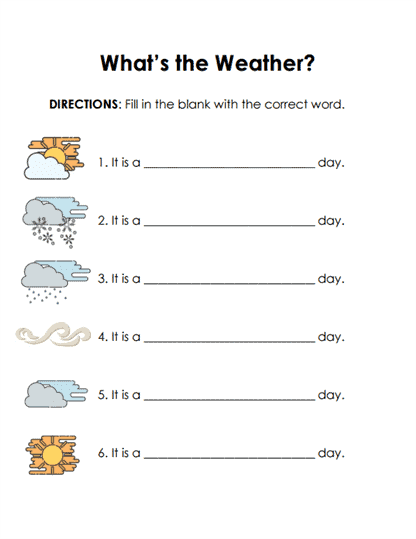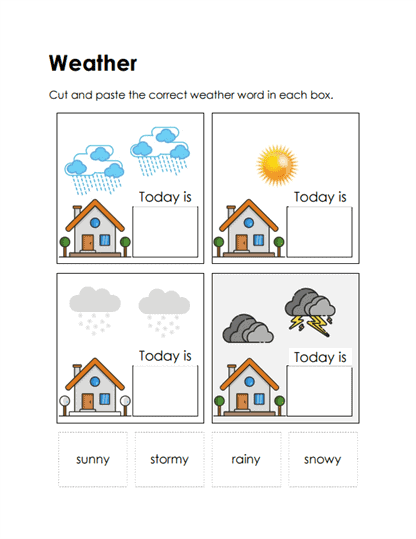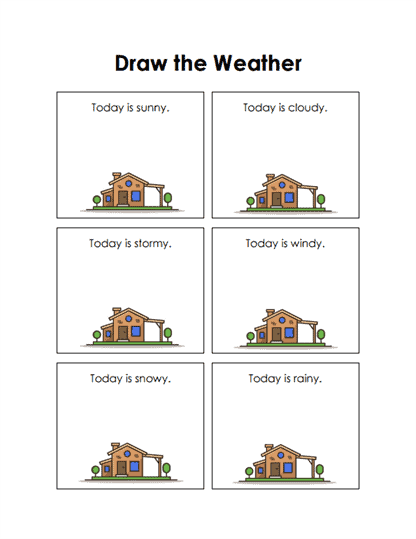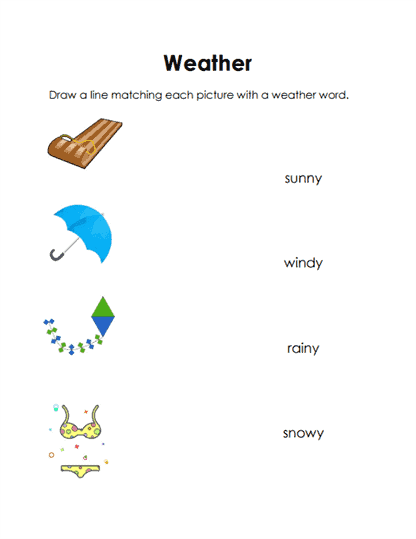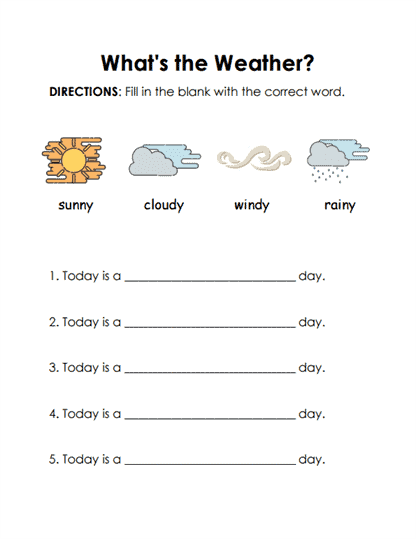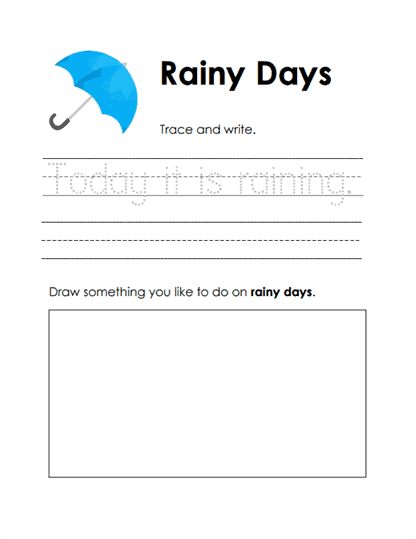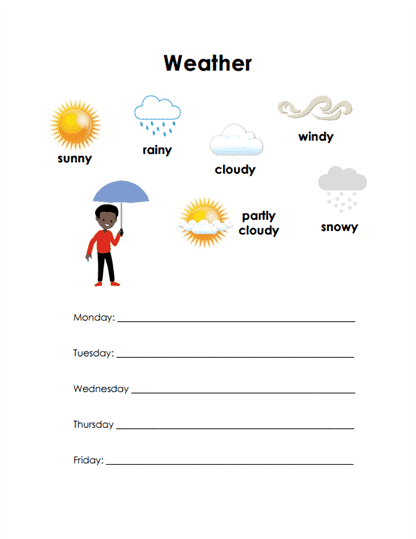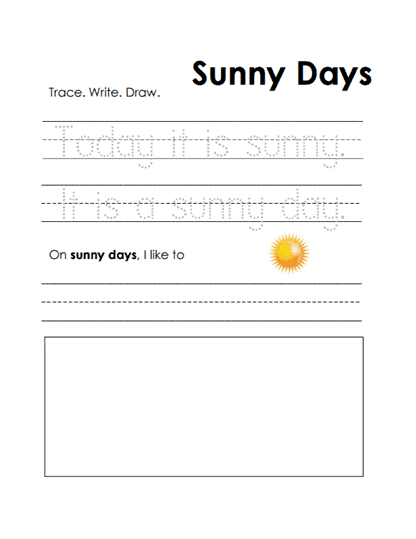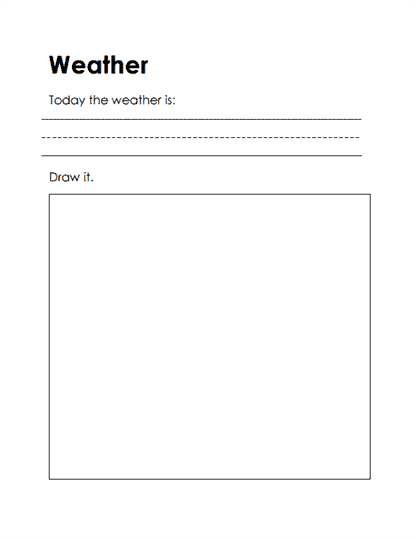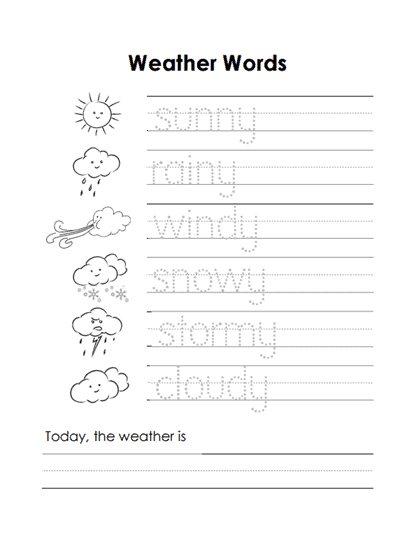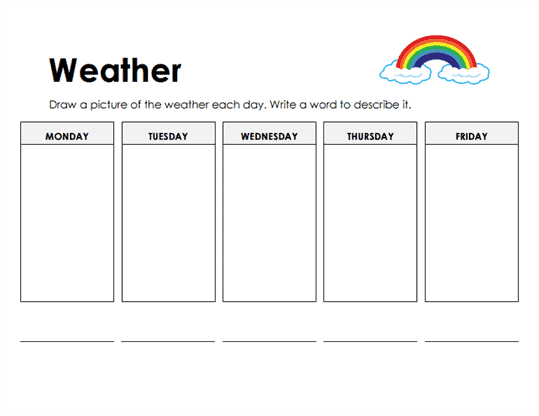Kindergarten Weather Worksheets
About These 15 Worksheets
The collection of weather worksheets for kindergarteners covers a variety of skills related to weather awareness, basic literacy, and fine motor development. Overall, these worksheets are structured to support students in identifying, describing, and forecasting weather through a variety of interactive tasks.
The worksheets introduce basic weather vocabulary such as “sunny,” “cloudy,” “rainy,” “snowy,” “stormy,” and “windy.” Students are encouraged to match weather words with their corresponding pictures, which helps develop early reading and comprehension skills. The use of common, easy-to-understand weather terms reinforces everyday language development in a context that children can easily observe in their own environment.
These worksheets focus on recognition and classification. By matching weather descriptions with visuals and practicing drawing or selecting weather patterns, students enhance their cognitive ability to differentiate between different weather conditions. This also helps them build foundational science skills, as they become more familiar with the different types of weather they might experience.
Fine motor skills are also targeted, as many of the tasks involve cutting, pasting, and drawing. These actions help children practice hand-eye coordination and improve their manual dexterity, which are important for future writing tasks. Similarly, activities that ask students to draw their interpretations of different weather conditions encourage creativity while reinforcing the weather concepts they are learning.
The inclusion of forecasting activities teaches students to engage in prediction and basic reasoning. By keeping track of weather conditions over a week, or making forecasts for the next few days, students practice observation and the application of their knowledge about weather patterns in a meaningful, real-world context. These tasks support critical thinking as children learn to apply what they have learned to make simple predictions.
The collection could include sensory-based worksheets that engage students in hands-on activities related to the weather. For instance, a worksheet could encourage students to think about how different weather feels by asking them to connect words like “cold,” “wet,” or “warm” to appropriate weather conditions. These sensory worksheets can help deepen the students’ understanding of weather through the use of descriptive language and personal connections, furthering both their cognitive and language development.
How Are Weather Forecasts Made?
There are very few things in our lives as universal as the weather. Weather plays a huge role in our daily lives. Whether it is a decision to hold a picnic or plan a visit to a ski resort, we depend on the weather forecast report to finalize our decisions. That does not mean these weather reports are to be fully trusted. This joke never gets old: Meteorology has to be the only occupation where you’ll still get paid for it even if you’re wrong all the time.
As with other fields of science, the meteorology of today is vastly different and improved from that of the past few decades. Scientists continue to push through boundaries to enable an even-perfect forecast in the coming years.
All of the weather comes from the heavens above, so that is where we must look to understand the mechanics of it.
The atmosphere surrounding the Earth is made up of oxygen, nitrogen, and water vapor. The airflow around the Earth carries the properties of one place to another, and in doing so, it changes the temperature levels, humidity, and visibility. In simpler words, the weather we experience results from the atmosphere’s heat moving from one place to another.
Forecasting through History
Predicting weather conditions may seem impossible to a person with limited knowledge. Still, research meteorologists claim that even though many factors are involved in this process, reliable observations are all they require for an accurate forecast of the evolution of a weather system.
Scientific weather observations go as far back as the Renaissance, around the time when thermometers and barometers were invented. Galileo’s findings using these instruments paved the way for explaining the mystery that was the weather. His findings also played their part in creating rudimentary weather maps by the late 1800s.
Early forecasts relied heavily on persistence – if state A experiences a weather on Monday and state B experiences the same weather on Tuesday, state C will experience that weather on Wednesday. It didn’t always work that way. Changing conditions, such as storms, were quick to change patterns, and the forecasting wasn’t reliable anymore.
Modern Weather Forecasts
Today, meteorologists use numerical weather prediction for creating forecasts by inputting current conditions into computer models. The more current and accurate information available to these models, the better the forecast. These stages are necessary for an accurate weather forecast:
– Knowing the current happenings in the weather
– Calculating future weather changes
– Fill gaps using meteorological expertise
Observations are made by recording weather variables 24 hours a day. The findings are then passed to weather forecasting centers and compared with satellite pictures to check the current weather behavior. The supercomputers at weather forecasting centers run several times a day to solve very complex equations for predicting the movement and change in intensity of weather at each location on the globe.

